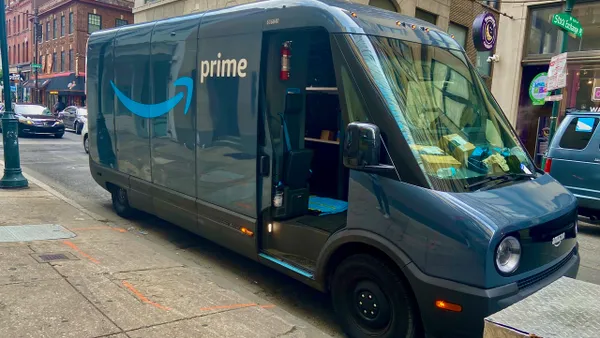Online marketplaces have evolved from simple product listing platforms into dynamic ecosystems that empower global commerce. Initially focused on basic transactions and standardized logistics, today's marketplaces offer advanced branding, marketing, and customer engagement tools. Features like social commerce, cross-border fulfillment, and AI-driven personalization have transformed how sellers reach and retain customers. This evolution reflects the broader shift toward more flexible, seller-centric models prioritizing global reach, local relevance, and seamless digital experiences.
The Evolution Away from Traditional Marketplaces
The early wave of marketplace success was built on standardization and scale. Sellers thrived under centralized systems that handled everything from warehousing to shipping, often in exchange for a cut of their profits and increasing compliance burdens. These platforms dominated by offering fast shipping, integrated advertising tools, and visibility — but over time, the balance of power began to shift away from sellers.
As competition intensified and operational costs grew, sellers started looking for alternatives that offered:
- More ownership over customer relationships
- Lower operational overhead and commissions
- Greater control over branding, marketing, and fulfillment
- Opportunities to reach emerging international markets
This shift represents more than just dissatisfaction — it reflects a broader evolution in marketplace thinking, where agility, global reach, and localization have become key to success.
AliExpress: A Marketplace Built for the Next Wave of Sellers
AliExpress, part of the Alibaba Group, has emerged as one of the most attractive destinations for sellers seeking new growth paths. Launched in 2010, AliExpress enables merchants to sell directly to local buyers without needing a physical presence in each market. Known for its wide range of products, competitive pricing, and cross-border logistics capabilities, the platform has grown into one of the world's leading e-commerce destinations.
Here’s how AliExpress stands out in the evolving marketplace landscape:
- Global reach by design: Sellers can access customers across Europe, Latin America, the Middle East, and beyond without needing to build country-specific infrastructure.
- Flexible fulfillment options: Whether shipping from overseas or utilizing local warehouses, sellers can choose logistics solutions that fit their cost and speed goals.
- Seller-centric policies: With lower platform fees and fewer category restrictions, sellers can list, test, and scale products more freely.
AliExpress offers a decentralized, borderless model that is increasingly aligned with how sellers want to operate in a globally connected retail environment.
Social Media: Powering Discovery and Growth
One of the key drivers behind the modern eCommerce shift is the integration of social media into the buying journey. Traditional marketplaces often act as closed ecosystems with limited social engagement. In contrast, AliExpress embraces a more open, socially connected model that mirrors how consumers now discover products.
Some of the platform’s standout social commerce features include:
- Influencer collaboration: Through partnerships with global content creators and affiliate programs, sellers can tap into niche communities on TikTok, Instagram, and YouTube.
- User-generated content and reviews: Buyers post authentic product experiences, which build trust and drive organic sales.
By turning social interaction into a sales funnel, AliExpress enables sellers to meet consumers where they are — not just on search engines, but on their favorite platforms.
Selling Opportunities for Merchants on AliExpress
Local U.S. merchants are offered two options when they first register to sell on AliExpress: AliExpressLocal Marketplace and AliExpressLocal Direct, both offering zero annual fees and low referral rates.
AliExpressLocal Marketplace provides local merchants with built-in infrastructure such as payment processing and customer service, enabling them to scale their businesses more easily while managing their own operations.
AliExpressLocal Direct is a dropshipping program that offers exclusive management services for US merchants. In this service, the platform is responsible for store operations, including pricing and promotions, while enabling merchants to efficiently manage local supply and deliver their products directly to US customers.
Cross-Border Fulfillment: Streamlined and Scalable
AliExpress’ logistics backbone, built on Cainiao and local warehousing networks, offers sellers the tools they need to manage inventory and shipping efficiently — across multiple geographies.
While traditional marketplaces often require full integration into their own fulfillment systems, AliExpress offers flexibility through:
- Standardized cross-border shipping options, such as AliExpress Standard Shipping, that ensure faster deliveries with global tracking.
- Local warehouse partnerships, enabling next-day or 3-day delivery in key countries, improving buyer satisfaction.
- Fulfillment models such as AliExpressLocal Direct or AliExpressLocal Marketplace, allowing sellers to start small and scale their logistics as needed without being locked into rigid programs.
These systems give sellers more freedom to control costs, test new markets, and provide a reliable customer experience worldwide.
Industry Shift: The New Marketplace Playbook
The eCommerce landscape is no longer defined by the old traditional marketplace model. Sellers are now embracing a multi-platform strategy, choosing to diversify across marketplaces that offer different benefits — whether that’s local market depth, lower fees, or innovative engagement tools.
AliExpress, in particular, has benefited from this shift by opening its platform to international sellers, removing the perception that it’s only for Chinese vendors. U.S., European, and Southeast Asian sellers are now increasingly joining the platform to expand their global reach without having to build their own international infrastructure. In 2024, AliExpress Big Save program pushed 95% of partner brands over $1 million USD in sales.
This shift signals a new era of eCommerce — one where platforms are partners in global growth, not just gatekeepers.
Conclusion: Embracing the Global Marketplace Model
As online retail continues to evolve, the power dynamics between sellers and marketplaces are being reshaped. Sellers today are looking for platforms that offer control, flexibility, and access to global buyers without excessive overhead or limitations.
AliExpress is emerging as a compelling answer to these needs — offering a scalable, socially driven, and globally localized platform that reflects how people shop and sell today.
For sellers ready to expand beyond the boundaries of legacy platforms, AliExpress provides not just an alternative — but a blueprint for long-term, borderless growth.










